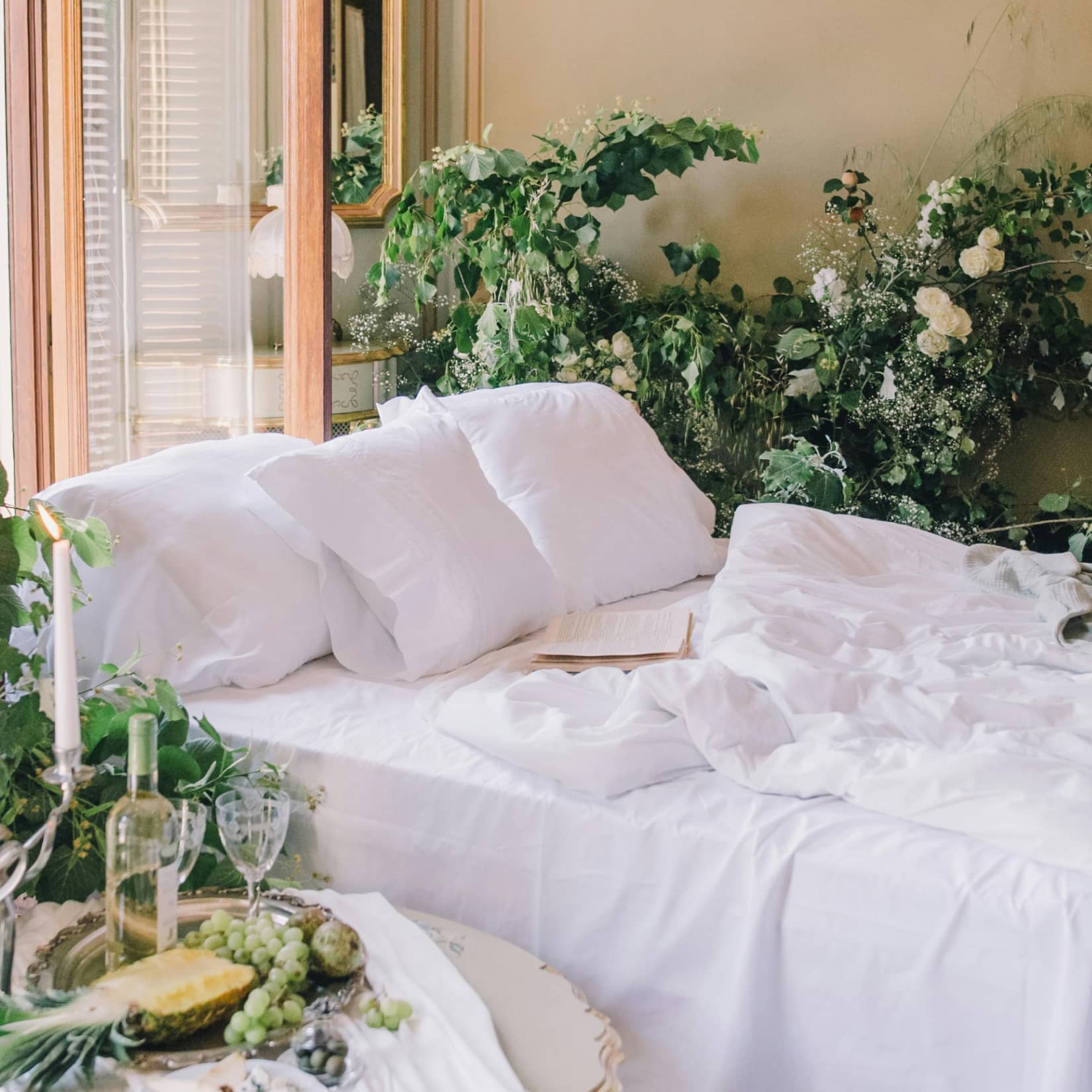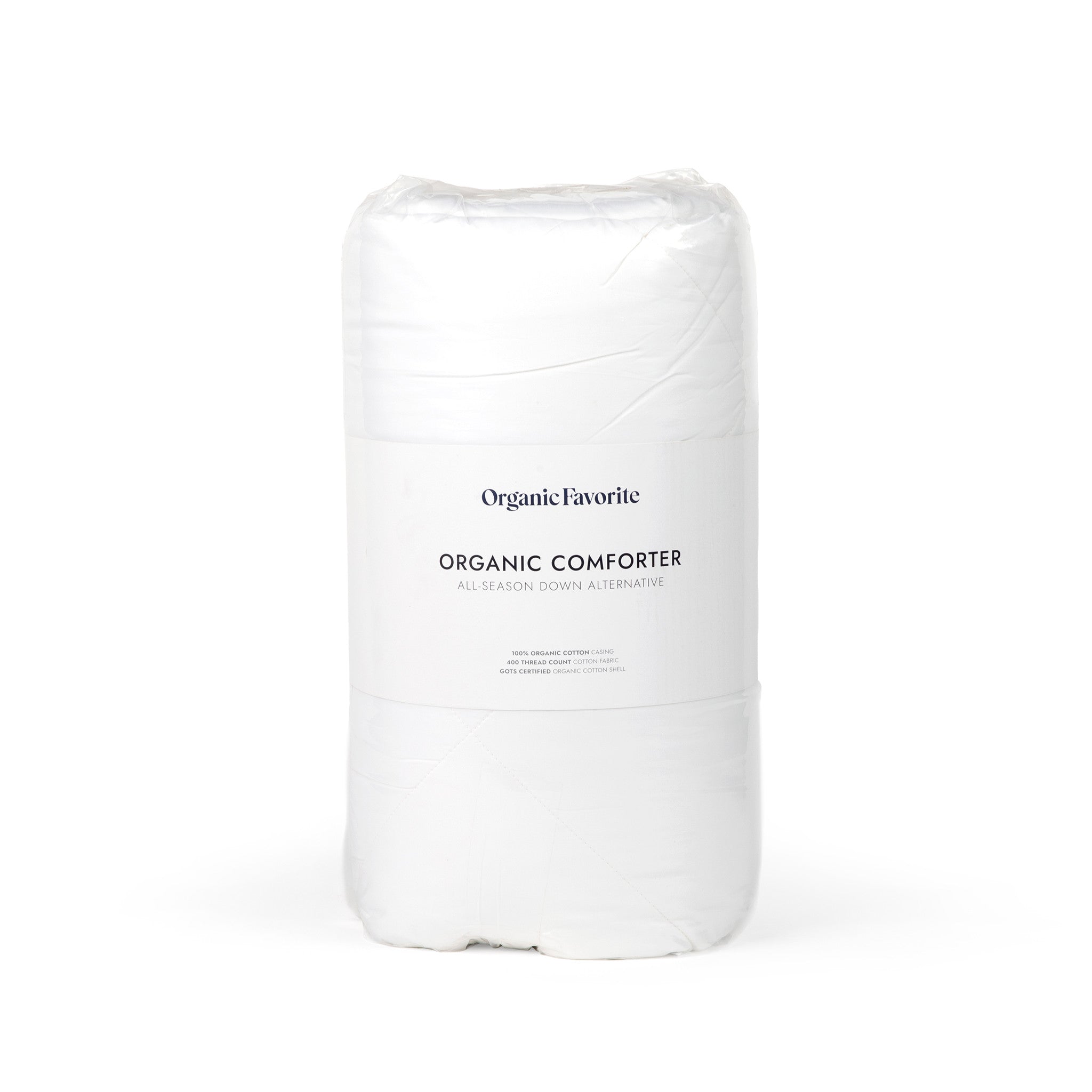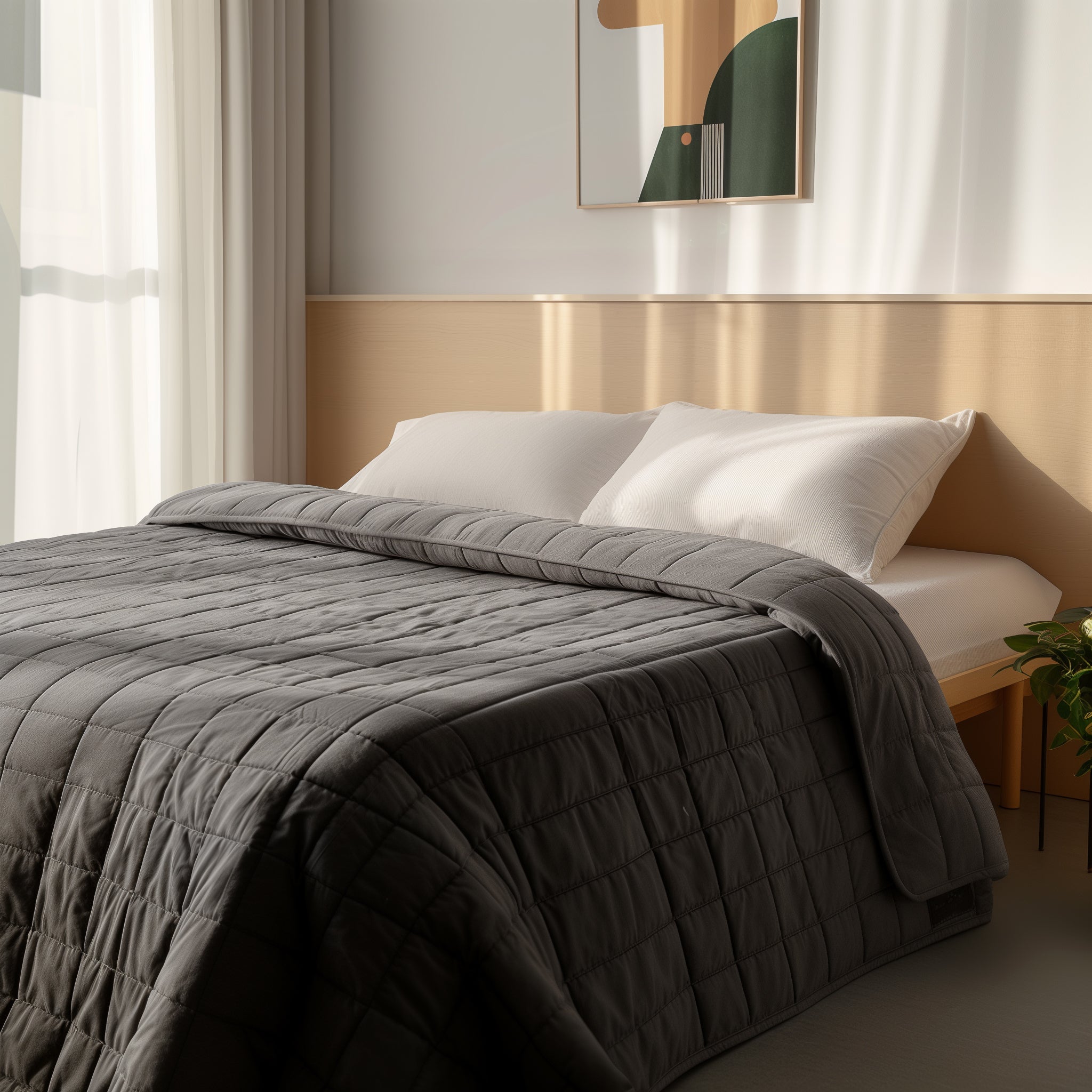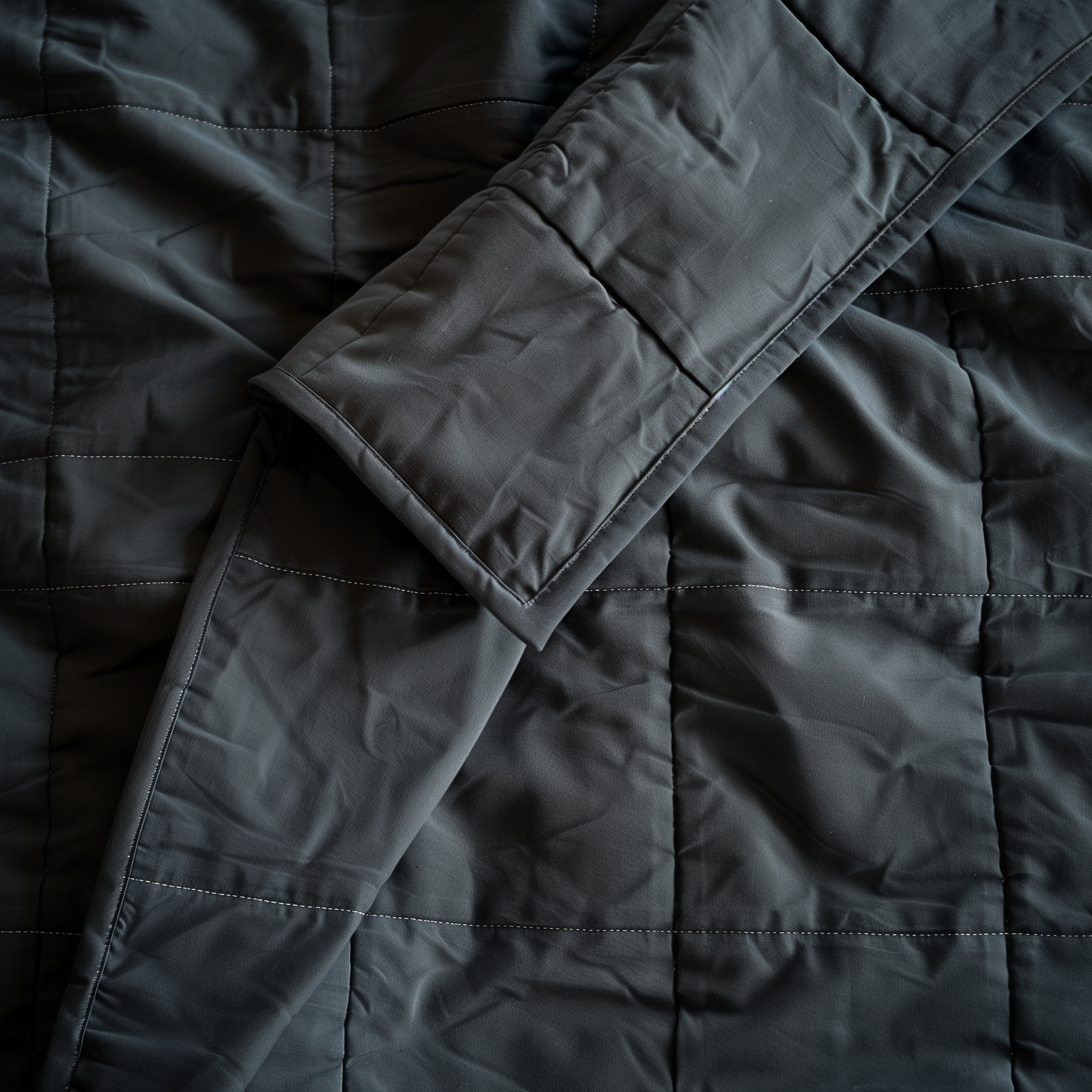Embracing Organic Living: Why It Matters
In our fast-paced modern world, it's easy to overlook the impact our choices have on both personal and planetary wellbeing. The bedroom—our deeply personal sanctuary for rest and rejuvenation—is the perfect place to start making more mindful decisions. By choosing certified organic textiles, we reduce our exposure to harmful chemicals while championing eco-friendly practices.
Conventional cotton farming relies heavily on pesticides and fertilizers, posing risks to farmers, ecosystems, and textile workers. These residual toxins can even linger in the fabric itself, coming into direct contact with our skin night after night. Over time, this raises potential allergy and irritation concerns.
Organic cotton, on the other hand, is grown without synthetic inputs, creating a safer product that's gentle on our bodies and the environment. I vividly remember when I first switched to an organic cotton comforter and sheets. There's something so comforting about knowing your sleep sanctuary is pure and free from harmful substances.
But the benefits don't stop at our bedrooms. By choosing certified organic textiles, you're supporting sustainable agriculture that replenishes rather than depleting our planet's resources. It's a small change that can make a big difference in moving toward a healthier future for all.
Building Your Organic Bedroom from the Ground Up
Transforming your sleep space into an organic oasis starts with the foundational pieces. The mattress, bedding, and bedroom furniture you select will set the tone for conscious living in your most sacred domain.
Choosing an Organic Mattress: Materials, Certifications, and Comfort Factors
For most of us, the mattress is the biggest investment in the bedroom. Finding the right organic option is key to ensuring a peaceful slumber. Look for GOTS (Global Organic Textile Standard) or GOLS (Global Organic Latex Standard) certifications as your assurance that the materials are authentically organic.
Organic mattress options include:
- Natural latex: Antimicrobial, dust mite-resistant, and superbly breathable.
- Organic cotton: Used for plush pillow-top or cover layers.
- Organic wool: Offers moisture-wicking insulation and natural fire resistance.
As with conventional mattresses, construction and personal sleep preferences should guide your final choice. But prioritizing certified organic materials helps create a healthier, chemical-free foundation for restorative rest.
Selecting Organic Bedding: The Benefits of Cotton, Linen, and Bamboo
Sheets, comforters, blankets, and pillowcases significantly impact the look, feel, and ecological impact of your sleep oasis. Luckily, nature provides an array of organic fabric options that combine sublime comfort with sustainable sourcing.
Organic Cotton: Breathable, moisture-wicking, and delightfully soft—especially in premium long-staple varieties. A perennial favorite for sumptuous sheets and plush comforters. Many customers report improved sleep quality thanks to the hypoallergenic nature of organic cotton.
Organic Linen: Wonderfully lightweight yet durable, linen bedding offers a crisper hand-feel that gets softer over time. Its hollow fibers allow excellent airflow, keeping you cooler at night while boasting impressive longevity.
Organic Bamboo: Among the most eco-friendly textiles, bamboo is inherently antibacterial and unbelievably soft. Its thermoregulating properties adapt to your body temperature for year-round comfort.
No matter which organic fabric you choose, look for certifications like GOTS, OEKO-TEX®, or Fair Trade to guarantee purity and social responsibility from farm to factory.

Curating Sustainable Bedroom Furniture: What to Look for in Materials and Craftsmanship
The fundamental pieces anchor your organic bedroom aesthetic. Seek out solid wood, rattan, bamboo, and other plant-based materials for furniture that adds warmth and character—and aligns with your earth-friendly values.
When evaluating wood pieces, opt for responsibly sourced options from manufacturers who prioritize sustainable forestry practices. Look for FSC (Forest Stewardship Council) certification, which ensures ethical management of renewable timber resources.
Vintage and antique furniture can also infuse character and sustainability. Just take care in proper refinishing and sealing to create a non-toxic end product. This marries history and modern sensibility for a truly one-of-a-kind aesthetic.

Designing with Organic Textiles: Style & Inspiration
With the core components in place, it's time to explore the art of layering organic materials into a captivating yet cohesive bedroom ambiance that reflects your personal style.
Layering Organic Textures and Patterns for a Cozy, Cohesive Aesthetic
One key to organic décor mastery: Thoughtful textural interplay. Combine foundational solids with patterns and prints in varying organic weaves to create visual depth and interest.
For example, anchor your space with plush organic cotton or linen sheets in a solid hue. Then layer with printed organic cotton coverlets, kantha-stitched quilts, or hand-loomed throws for pops of personality and cozy contrast.
When selecting patterns, pay special attention to the print methods used. Look for low-impact dyes that are OEKO-TEX® certified to ensure safety and sustainability.

Incorporating Organic Accent Pieces: Rugs, Curtains, and Decor
Push your organic styling narrative further by layering in complementary accent pieces that amplify your aesthetic vision. Natural fiber rugs in jute, sisal, or organic wool instantly ground the space. Opt for organic cotton or bamboo window coverings to control light and privacy.
In the décor arena, wood, rattan, earthenware, and other botanical crafts can serve as eco-elegant finishing touches. Seek out artisanal pieces created by fair trade cooperatives that support global craftspeople and communities.
By meticulously curating each element, you'll create a bedroom sanctuary that feels cohesive yet brimming with natural textures and global influences. It's the sublime intersection of purposeful living and organic luxury.
Styling Tips for Balancing Comfort and an Eco-Conscious Ambiance
Bringing an organic bedroom to life means finding that sweet spot between comfort and sustainability. Here are a few tips to find that perfect middle ground:
- Anchor the room with quality core pieces (mattress, bedding) for both cozy comfort and environmental responsibility.
- Let Mother Nature guide your color palette with soothing earth tones accented by pops of jewel tones or soft pastels.
- Incorporate lush, sculptural plants to boost oxygen and connection with the outdoors.
- Add textural depth through handmade pieces (rugs, throws, ceramic accents) for warmth and artisanal character.
- Illuminate with clean-burning beeswax or soy candles to set a calming, natural ambiance.
Above all, an organic bedroom should feel serene and restorative—so let your individual tastes guide the final finishing touches.
Investing in Quality: The Organic Bedding Difference
By now, you've likely realized not all organic bedding is created equal. High-quality construction and premium materials are key to enjoying sublime comfort night after night. Let's dive into the details on what really sets the finest organic bed linens apart.
Comparing Organic vs. Conventional Bedding: What You Need to Know
The benefits of organic bedding extend far beyond feeling fabric against your skin. From the farm to the factory, every part of the production process matters.
Organic Farming: No synthetic pesticides or fertilizers means less air and groundwater contamination. It also protects farmers and agricultural workers from hazardous chemical exposure.
Low-Impact Manufacturing: Ethical manufacturers avoid toxic dyes and harsh chemical finishes. You can rest assured your bedding is pure and safe for your family.
Fair Labor Practices: Reputable organic brands uphold workers' rights and living wages throughout their supply chain. Your purchase supports human dignity.
Sustainable Textiles: Fibers like organic cotton and linen require far less water and land than conventional crops, reducing environmental strain.
Essentially, by opting for certified organic bed linens, you're voting with your dollar for a cleaner, more ethical method of textile production that gives back to people and the planet.
Exploring the Benefits of organic favorite's Organic Cotton Comforter
At organic favorite, we're committed to offering luxurious, high-performance organic bedding that elevates both personal wellness and sustainability. Our Organic Cotton Comforter with a premium synthetic down filling and sateen shell beautifully exemplifies this ethos.
The 100% organic cotton sateen shell is GOTS (Global Organic Textile Standard) certified. This rigorous certification verifies the organic integrity of the raw materials and all steps of the manufacturing process. From the soil to the fabric, you're ensured a pure and safer product.
But we don't stop there—the comforter's dyes also hold an OEKO-TEX® Standard 100 certification. This extra screening tests for harmful substances to give you peace of mind that even the colors are free from toxins.
With a plush 600 GSM weight, this synthetic down comforter combines serious coziness with the breathable softness of organic cotton. Many customers report improved sleep quality thanks to the temperature regulation and allergy-friendly construction.

Understanding Certifications: GOTS, OEKO-TEX®, and What They Mean
As you begin exploring organic textiles, you'll likely notice a few key certification labels appearing again and again. Here's a quick primer on two of the most important seals to look for—and exactly what they signify:
GOTS (Global Organic Textile Standard): This leading processing standard ensures organic integrity from farm to finished fabric. To become GOTS certified, textiles must contain a minimum of 70% organic fibers and meet rigorous environmental and social criteria in their production methods, chemical inputs, wastewater treatment, and more.
OEKO-TEX® Standard 100: One of the world's best-known labels for textile safety. Products certified under this standard have been independently tested and verified to be free from over 100 harmful substances like lead, formaldehyde, and phthalates that can negatively impact both human and environmental health.
These certifications not only give you confidence in buying an authentically organic product but also provide assurance that workers and ecosystems are protected throughout the supply chain. They signify true organic purity you can feel good about.
Creating an Organic Bedroom on a Budget
Perhaps the biggest barrier keeping many from embracing organic living is the perception that it's prohibitively expensive or exclusive. The truth is, an ever-growing number of high-quality yet affordable options now exist to help you create a chemical-free sanctuary on almost any budget.
Identifying Affordable Organic Bedding and Decor Options
Decorating an entire room with top-tier organic furnishings can understandably strain most budgets. The key is identifying your biggest priorities and slowly building from there.
Bedding (sheets, comforters, blankets) is often an ideal starting point. Look for high-quality basics from reputable brands like organic favorite that won't break the bank yet still offer ethical, long-lasting craftsmanship. You'll spend around a third of your life snuggled in these sheets, so it's a solid foundational investment.
For decor, blend artful secondhand finds with a few handmade accessories from sustainable makers. Sites like Etsy and NOVICA connect you directly with global artisan cooperatives producing fair trade, organic goods at surprisingly attainable price points.
Sustainable Sourcing and Secondhand Shopping Tips
You'd be amazed at the incredible organic treasures awaiting discovery through secondhand sources. Hit up local flea markets, Craigslist, and antique shops looking for solid wood and antique furniture crafted by hand. With some basic refinishing, you can breathe new life into these heirloom-quality pieces for a fraction of buying new.
Similarly, estate sales and online resellers like Chairish offer a treasure trove of gently used organic textiles like vintage rugs, throw blankets, and pillows. This not only saves you money but reduces textile waste by giving new life to existing pieces.
If going the secondhand route, just be mindful that older wooden furniture pieces may require proper sealing or eco-friendly refinishing with low-VOC stains and sealants.
Prioritizing Investments for Maximum Impact and Longevity
Of course, sustainable furnishing is about so much more than affordability. When viewing pieces through an environmental lens, longevity and versatility become key. Concentrate your spending on quality organic pieces built to last for years or even decades.
For example, an investment organic cotton duvet insert or hemp area rug may cost more upfront, but their natural durability lets you enjoy them for the long haul—and pass them down when the time comes. Not only does this maximize value, but it's an inherently eco-friendly choice that reduces landfill waste.
Pieces built to transcend trends become even more sustainable. Opt for classic organic bedding in neutral tones that won't feel quickly dated. Then infuse your signature aesthetic through pops of color and style in organic accent pieces you can easily and affordably update season after season.
Caring for Your Organic Bedroom Essentials
Building your toxin-free sleep sanctuary is only half the journey. By properly caring for these organic investments, they'll retain their luxurious look and feel for years to come.
Proper Washing and Maintenance for Organic Textiles
While organic bedding is wonderfully low-maintenance compared to high-maintenance silk or satin, there are a few key tips to observe for worry-free cleaning.
First, always adhere to specific care instructions for the fabric at hand. For instance, most organic cotton and linen can be machine washed using a gentle or delicate cycle and tumble dried on low heat or line dried. Follow any specified water temperature instructions.
For natural fibers like bamboo and hemp, avoid using fabric softeners or bleaching agents, as these can degrade the fibers over time. Gently launder and hang dry whenever possible.
If your bedding features colorful prints or dyes, always check for colorfastness by testing an inconspicuous area before putting items in a hot dryer.
Eco-Friendly Cleaning Solutions for a Healthy Sleep Environment
By now, chances are you're hooked on the purity and breathability of organic bedding. So why stop at the sheets? You can achieve an even healthier respite by cleaning your entire sleep space using natural, non-toxic cleansers.
For mattress care, sprinkle on some baking soda and let it sit before vacuuming up—this absorbs moisture and odors naturally while giving your mattress a refresh. A simple lemon-water solution works wonders on most bedroom surfaces, cutting through grime without harsh chemicals while adding a fresh fragrance.
And for spot treatment on sheets, mattresses, and upholstery, keep some white vinegar diluted with water in a spray bottle. Its acidic properties help lift stains while naturally disinfecting.
With some simple pantry staples and a few sustainable cleaning products (like branch basics or Puracy), you'll ensure your organic oasis stays sparkling clean and pure.
Extending the Life of Organic Products Through Mindful Practices
Proper maintenance practices aren't just about caring for your treasured organic textiles. They also help maximize each piece's longevity by extending its use for years or even decades to come. This is a key part of embracing an organic lifestyle.
One essential tip: Take time to understand each fabric's properties and care for it accordingly. Linen and cotton may wrinkle more easily, but develop a softer, inviting patina over time. Beeswax and organic wood oils help nourish cutting boards and furniture.
Similarly, store out-of-season organic bedding, apparel, and décor in a breathable, pest-free environment. Gently clean items before storage, fold neatly (avoid creasing), and consider acidic paper inserts to help absorb moisture and keep fibers fresh.
These small mindful practices combined with routinely using your pieces ensure your organic investments keep paying dividends—in comfort, aesthetics, and sustainability—for years to come.
The Organic Bedroom: A Sanctuary for Wellness
In the end, transforming your sleep space into an organic sanctuary offers so much more than a beautiful aesthetic or healthier home. Through each thoughtful purchase and caring ritual, you're also cultivating a more balanced, wellness-focused lifestyle.
How an Organic Bedroom Supports Better Sleep and Overall Well-Being
When we lie down at night surrounded by certified organic products, our bodies are enveloped in a chemical-free environment. This means no more disrupting sleep due to off-gassing from synthetic bedroom items.
But it's about more than just optimizing physical rest. Drifting off each night shrouded in gentle, natural fibers and textures like organic cotton and sustainable woods creates a deep psychological ease. You can fully let go and unwind knowing your sanctuary is pure, safe, and harmonious with nature.
Over time, this connection between your sleep space and total-body wellness becomes second nature—facilitating more mindfulness, less environmental anxiety, and an intuitive attunement to the soothing rhythms of nature.
An organic bedroom that connects you to the beauty and resilience of nature ultimately becomes more than just a bedroom. It's a sanctuary that reminds you to find pockets of simplicity and intentionality in the chaos modern world.









